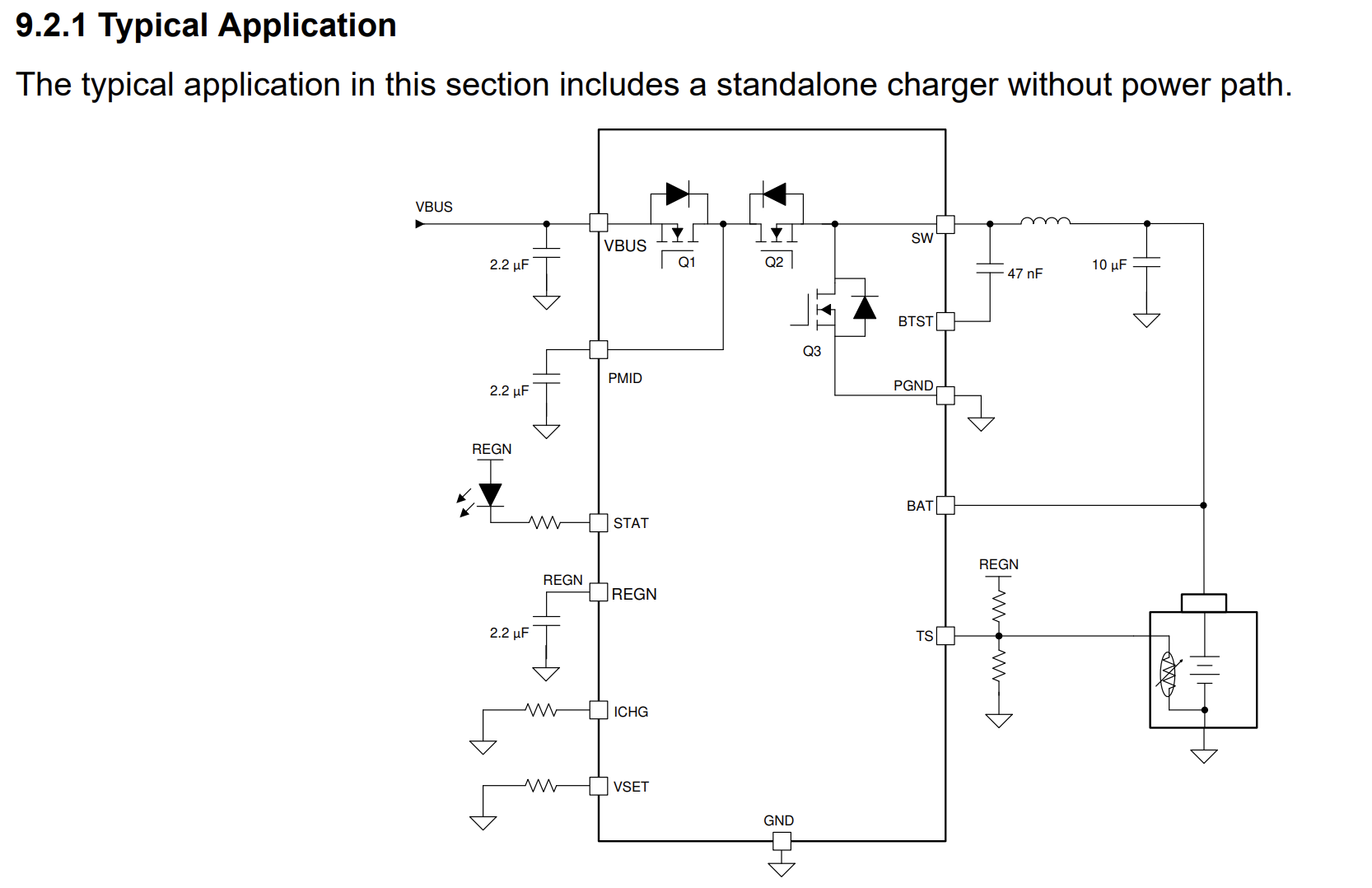I’ve been messing around with circuits my entire life but this design was time sensitive and I’ve never done my own PCB designs before, so I hired someone to put this together. After getting some test boards, when I plug them in the charger chip gets very hot and smells like burning…
Circuit is just a simple li-ion usb charger and a switch. I’ve gone through the datasheet for the bq25302 more times than I can count and I’m missing something obvious here. Using it just for delivering power seems to work fine, the problem is only when charging.
I do see R6 + R7 off TS don’t have the recommended 10k values, but I don’t feel like that would cause what I’m seeing. This is being connected to a 21700 lipo.
Someone mind lending me their eyes please?
bq25302 datasheet - https://www.ti.com/lit/ds/symlink/bq25302.pdf

There should be a capacitor between REGN and ground and BAT and ground.
Oooh, thanks.
Stupid schematic question for a second, when looking at this:

If the “REGN” above the LED there is just referring to the REGN pin right below, why doesn’t the line just go back down to the pin? Is this just a style thing, or does it mean something functionally different?
It means the same thing. I would have just drawn a line since they are right next to each other.
Thanks!
I could be wrong, but I did finish a degree in EE even if I just do software now. But here’s my quick take on it.
Probably because you’re driving voltage on STAT from REGN.
STAT should have a current limiting resistor on it, go through your led, then ground.
REGN should have a 2.2uf cap between the pin and ground according to the datasheet.
STAT should have a current limiting resistor on it, go through your led, then ground.
That would make sense, but page 21 of the datasheet with a typical application shows it going to REGN.
If it’s missing the cap on REGN though, that would probably fuck this all up? I must admit I’m not good at understanding when/where caps are applied.
